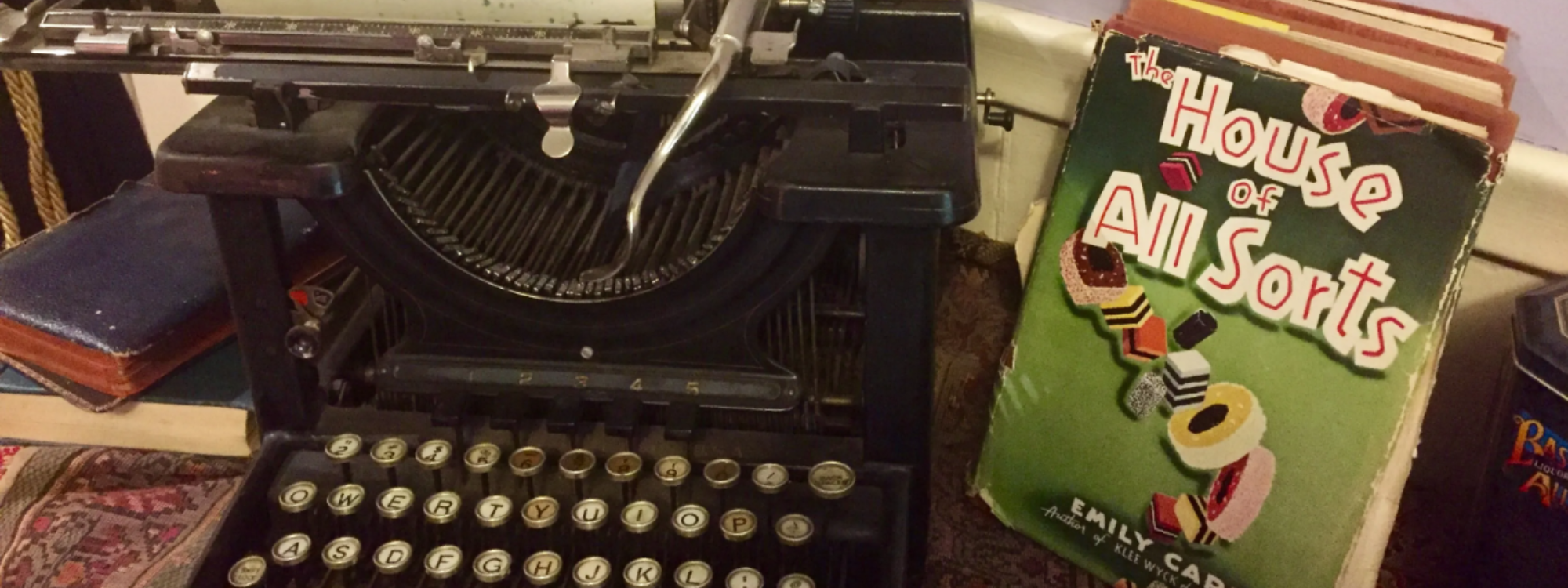The books were written some time after the events they recounted, however, and the uncertain process of memory, heightened -- even distorted -- by her literary skill and sense of drama, has made them unreliable sources for biographic detail. She frequently understates her age and is given to self-dramatization and idealization.
The stories in Klee Wyck are based on her experience with Indians and on visits to Indian communities, but they are also stories in which time collapses and events are reshaped and interpreted to make a point in a story rather than to provide documentation."
from: The Art and Life of Emily Carr (1979) by Doris Shadbolt.
her autobiographical short stories published during her lifetime
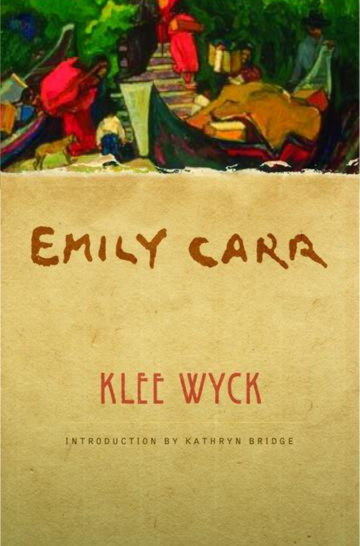
The legendary Emily Carr was primarily a painter, but she first gained recognition as a writer for her first book, published in 1941,. The book was a hit with both critics and the public, won the prestigious Governor Generals' Award and has been in print ever since. She wrote these twenty-one word sketches after visiting and living with Native people, painting their totem poles and villages, many of them in wild and remote areas. She tells her stories with beauty, pathos and a vivid awareness of the comedy of people and situations.
A few years after Carr's death, signifcant deletions were made to her book for an educational edition. This new, beautifully designed keepsake volume restores Klee Wyck to its original published verison, making the complete work available for th e first tim in more than fifty years. In her intriguing introduction, archivist and writer Kathryn Bridge puts Klee Wyck into the context of Emily Carr's life and reveals the story behind the expurgations.
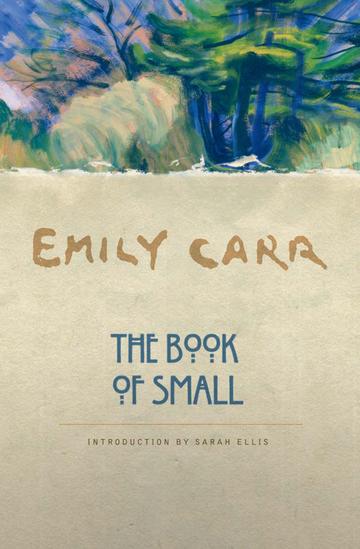
The Book of Small is a collection of thirty-six word sketches in which Emily Carr relates anecdotes about her life as a young girl in the frontier town of Victoria. She notes: "There were a great many things that I only half understood, such as saloons and the Royal Family and the Chain Gang."
The young Emily, who gave herself the nickname "Small," was an intense, observant and sensitive yet rebellious child, who often got into scrapes because of her frankness or innocence. The vividly told stories reveal an awareness of the comedy -- and pathos -- of people and situations. The also offer an intimate look into childhood in a pioneer society in Victorian Times. The Book of Small is a classic memoir of early childhood and a wonderful addition to The Emily Carr Library.
In her empathetic and engaging introduction, award-winning children’s writer Sarah Ellis puts The Book of Small into the context of Emily Carr’s life and times, which, she points out, have similarities to those of Lucy Maud Montgomery and Beatrix Potter.
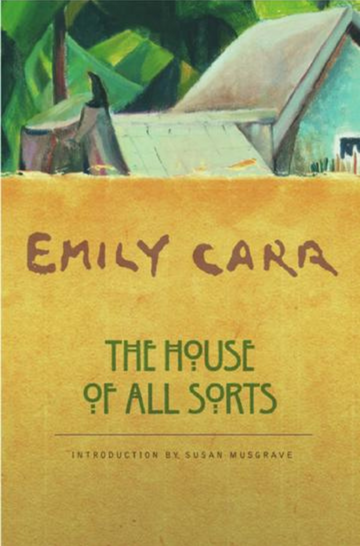
Before winning recognition for her painting and writing, Emily Carr built a small apartment building with four suites that she hoped would earn her a living. Emily borrowed money from her sister Edith to finance building the House of All Sorts, round the corner from the family home. Her plan was to design a small two-storey apartment building that she could rent out to tenants to cover the mortgage with a studio for herself. Things turned out worse than she expected, and in her forties, the gifted artist found herself shoveling coal and cleaning up other people's messes.
The House of All Sorts is a collection of forty-one stories of those hard-working days and the parade of tenants -- young couples, widows, sad bachelors and rent evaders. Carr also ran a small kennel and bred bobtails to help out her meagre income. In an additional twenty-five stories, she describes the mutual bonds of affection between her and her dogs. Her writing is vital and direct, aware and poignant, and as well regarded today as when it was first published in 1944 to critical and popular acclaim.
her autobiographical stories edited & published after her death in 1945
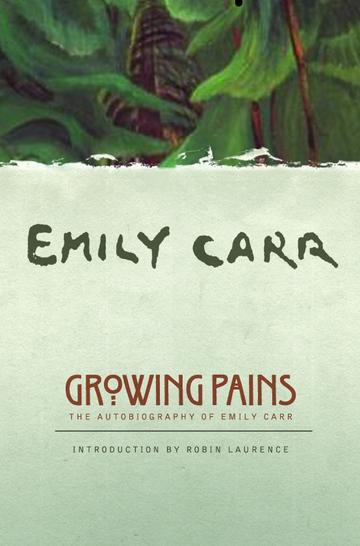
Growing Pains is the fifth of the seven books by Emily Carr to be published by Douglas & McIntyre in a completely redesigned edition, each with an introduction by a noted Canadian writer or an authority on Emily Carr and her work.

Published in 1996, Hundreds and Thousands consists of Emily Carr's journals from 1927 to 1941. She began keeping a journal in 1927, when, after years of her work being derided and ignored, came unexpected vindication and triumph when the Group of Seven accepted her as one of them and encouraged her to overcome the years of despair when she stopped painting.
Hundreds and Thousands is the sixth of seven books by Emily Carr to be published by Douglas & McIntyre in a completely redesigned edition, each with an introduction by a noted Canadian writer or an authority on Emily Carr and her work.
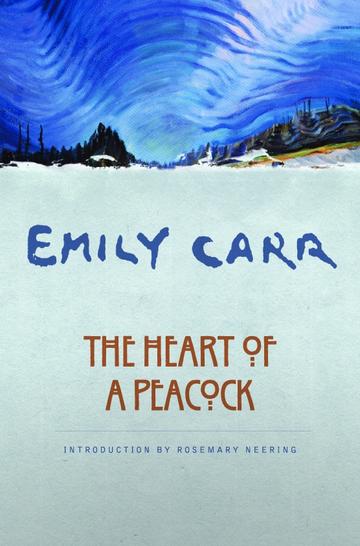
Published in 2005, this collection of 51 short stories by the legendary writer and painter Emily Carr, Heart of a Peacock is arranged by the editor, Robin Laurence, in themes such as her experiences with Native people, her adventures with various beloved creatures and her love of nature. Together, they underline Carr's place as a writer with the sharp yet tender eye of an artist, with a deep feeling for the tragedies of life and with a rich sense of the comic. The book is enhanced by seven of Carr's line drawings of scenes from nature.
The Heart of a Peacock is the fourth of the seven books by Emily Carr to be published by Douglas & McIntyre in a completely redesigned edition, each with an introduction by a noted Canadian writer or an authority on Emily Carr and her work.
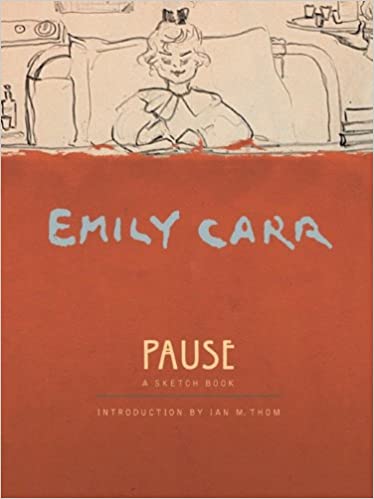
Unique among the artist's published works for its combination of words and drawings, this charming addition to the Emily Carr Library presents a poignant yet wry account of her convalescence in the English countryside. While studying at the Westminster School of Art in London, England, Emily Carr so undermined her health by overwork that she was sent for complete rest to a sanatorium in the country for eighteen long months. She recorded the story of her convalescence in a sketchbook. Her active mind and restless nature rebelled at the hospital restrictions enforcing rest. Undaunted, she managed to make friends, raise birds and get into mischief.
Pause: A Sketchbook, is the final volume in Douglas & McIntyre's completely redesigned set of seven books by the legendary Canadian artist and writer, renowned not only for her powerful paintings but also for her extraordinarily vivid prose.
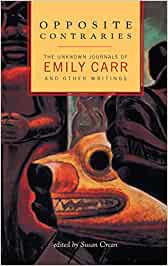
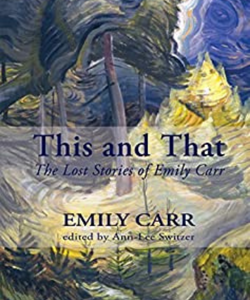
Once available and appreciated only by researchers, these stories edited by Ann-Lee Switzer remained buried in the British Columbia Archives until 2007. Finally, readers are given a new glimpse into Emily Carr's life with this collection. Carr began to write these stories in the last two years of her life. She wrote of the project: ". . . they are too small each to be taken singly, but each, complete in itself, serves to ornament life which would be a drab affair without the little things we do not even notice or think of at the time but which old age memory magnifies." This collection illuminates her life and is available to all in This and That: The Lost Stories of Emily Carr. Enter Emily's world with stories like "Father's Temper," "The First Snow" and "Smoking with the Cow," stories in which she reveals details of her family life, school days, her fascination with nature, animals she loved and how she learned to smoke.
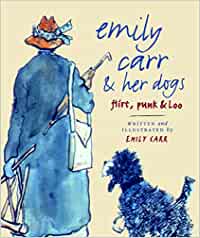

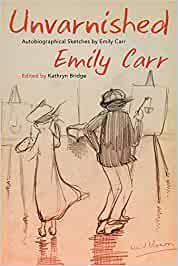
Culled from the handwritten pages in old-fashioned scribblers and almost-forgotten typescripts amid drafts for her published stories, Unvarnished features among the last unpublished and highly personal writings of the iconic Canadian author and artist Emily Carr.
This highly readable manuscript edited by Royal BC Museum curator emerita Kathryn Bridge and illustrated with sketches and photographs from the BC Archives spans nearly four decades, from 1899 to 1944. In an almost stream-of-consciousness outpouring of stories, Carr chronicles her early years as an art student in England, her life-altering sojourn in France and subsequent travels to Indigenous villages along the coast, her encounters with the Group of Seven, conversations with artist Lawren Harris, and her sketching trips in the "Elephant" caravan in the company of a quirky menagerie. Also included are stories written in hospital recovering from a stroke, a particularly vulnerable time in her life.
Emily Carr's books have remained in nearly continuous print since the 1940s. Unvarnished is a fresh addition to her enduring oeuvre, to be enjoyed as a complement to her other writings or as a jewel in its own right.
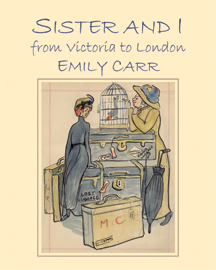
Victoria, BC, July 11th 191. . . . With red eyes and a body guard of sniffing "faithfuls" attending us, we start on our long trip abroad. . . .So begins Emily Carr's memoir of her trip to England with her sister Alice. They travel across Canada by rail to board an ocean liner in Quebec City, meeting interesting characters and having many adventures along the way. They hike in "gloriously cool and beautiful" Glacier House, and encounter porcupines and wasps in otherwise "heavenly" Lake Louise.
They carry on to the "wonderful little town" of Medicine Hat, then Winnipeg, Montreal and "wonderful historic old" Quebec City, where they prepare for boarding the Empress of Ireland for Liverpool.
Sister and I presents Emily Carr's whimsical account of her trip across Canada, written and illustrated in her own hand, directly from Carr's original notebook. This one-of-a-kind book is introduced by Kathryn Bridge, who places it in context with Carr's life and works.
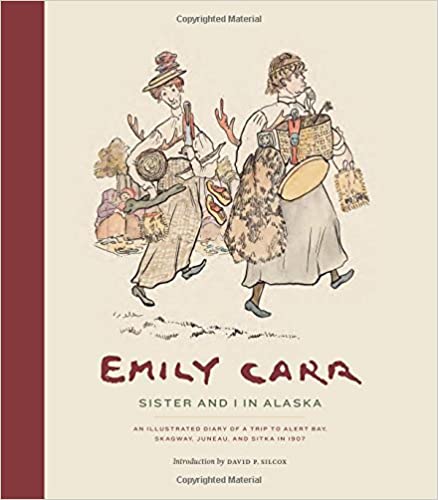
When Canadian artist Emily Carr (1871–1945) went to Alaska in 1907, she experienced a pivotal moment in her career. With a diary in her pocket, and her sister Alice in tow, Carr recorded the events that would later influence her artistic style. Today, fans of her work can explore the details of this most important and life-changing journey, 108 years later.
Carr’s diary — published in 2014 as Sister and I in Alaska — is a charming book that offers readers a glimpse into the humour and talent of a 36-year-old Carr. Believed to have been lost for more than 60 years, the diary was discovered by Canadian author David P. Silcox in 2011. Silcox was visiting Tom Daly, Jr. — grandson of Carr’s late friend Katherine Daly — when Tom brought out a diary he had inherited from his father. Realizing the significance of the diary, Silcox arranged to have it published.
Editor, David P. Silcox has received the Order of Canada and a Governor General's Award for his many contributions to all the disciplines of the arts in Canada. He has written several award-winning books: Painting Place: the Life and Work of David B. Milne, Tom Thomson: The Silence and The Storm (with Harold Town The Group of Seven and Tom Thomson, and Christopher Pratt, as well as numerous articles, catalogues, and reviews on artists and the arts.
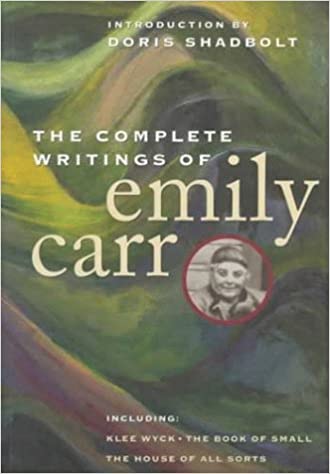
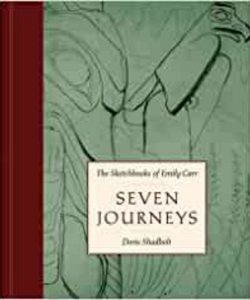
Distinguished art critic Doris Shadbolt has chosen 85 drawings from Carr's sketchbooks, those which particularly reveal the wellsprings of her inspiration. In an introductory essay and commentary for each of Carr's seven journeys along the British Columbia coast, Shadbolt's inspired text evokes the intimacy and immediacy of the drawings themselves, and takes us close to the heart of Emily Carr.
Among the collections of Emily Carr material at the British Columbia Archives is a special cache of thirteen small drawing books. The sketches in these volumes were done quickly to catch the features of a passing scene, to note the form and rhythms of a tree, as preliminary experiments in handling complex visual material. As indicators of a part of Carr's process of making art, and as notes of several significant trips made during a turning point in her life as an artist, they are fascinating and illuminating.
In that critical period, between 1927 and 1930, Carr made seven journeys -- several to isolated Native villages in coastal British Columbia, two to eastern Canada to meet fellow artists in the Group of Seven, and one metaphorical journey that was an intrinsic part of all the others -- to nature itself. On these travels and sketching trips, she used her drawings as part of the process of working out ideas, techniques and themes to develop the mature painting style that was uniquely hers.
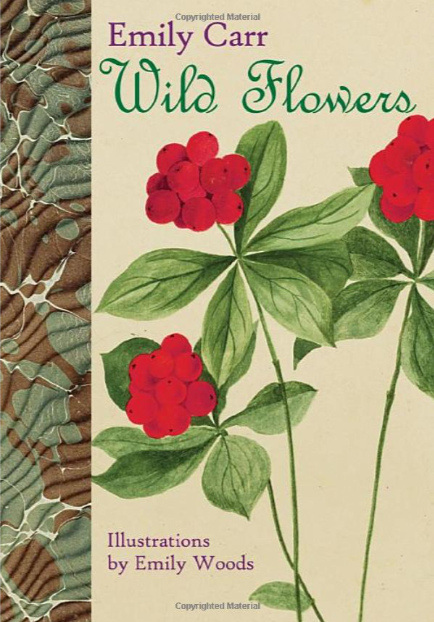
See Emily Wood's illustrations
important books about Emily Carr
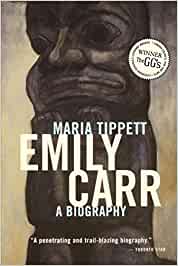
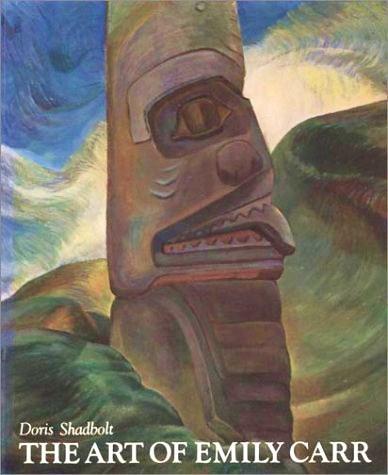
This book represents the culmination of Doris Shadbolt's long fascination with the work of Carr, a painter she views as one of the strongest and most individual of Canadian artists. It reflects more than a decade of meticulous research, and excerpts form Carr's own prolific writings have been skillfully woven into the narrative, combining with exquisite reproductions of over 200 paintings, charcoals and drawings, two thirds of them in colour, almost all of them specially photographed for this book. Never swallowed by the mainstream in art, Emily Carr remained extraordinarily loyal to her inner vision. The world she created lingers persuasively in the Canadian psyche.
Author Doris Shadbolt's observation that Emily Carr "forced her will on the patterns of her life" could apply as well to the patterns of our perception. Shadbolt offers an opportunity to submit to Carr's vision in The Art of Emily Carr the most complete and authoritative book available on this extraordinary Canadian woman artist. In it Shadbolt, a curator at the Vancouver Art Gallery for 25 years who also edited The Collected Writings of Emily Carr, interweaves a comprehensive collection of 177 sketches, watercolours, and works in oil along with a series of detailed biographical essays and occasional passages from Carr's own writing.
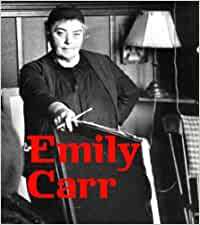
Defiant Victorian, drawn to the deep forest and the open sky. Early recorder of Northwest Coast monumental art. Painter. Writer. Humorist. Emily Carr is all of these, and she is unique in the Canadian cultural pantheon. We know much about Emily Carr, but what of the social and political contexts that surrounded her, that defined her image and her posterity? This groundbreaking book by three distinguished senior curators -- Charles C. Hill, Johanne Lamoureux, Ian M. Thom -- and seven equally distinguished Canadian essayists -- Jay Stewart & Peter Macnair, Shirley Bear & Susan Crean, Marcia Crosby, Andrew Hunter, and Gerta Moray -- sheds new light on Emily Carr and her world.
Ian M. Thom is a Senior Curator-Historical at the Vancouver Art Gallery. Involved in Canadian art museums for more than thirty years, he has also held senior curatorial positions at the Art Gallery of Greater Victoria and the McMichael Canadian Art Collection. He has organized more than one hundred exhibitions and written numerous articles and authored or co-authored many books, including Robert Davidson: Eagle of the Dawn, Andy Warhol: Images, Art BC, E.J. Hughes, Takao Tanabe, B.C. Binning, Emily Carr: New Perspectives on a Canadian Icon and Challenging Traditions: Contemporary First Nations Art of the Northwest Coast. He lives in Vancouver, BC.
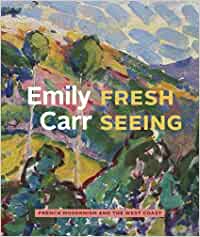
In 1911, Emily Carr returned from a sixteen-month trip to France with a new understanding of French Modernism and a radically transformed painting style that broke free from the artistic shackles of her conservative training and embraced a new means of expression. Her studio experiences in Paris, her en plein-air painting in the French countryside, and her encounters with such artists as expatriate English painter William Henry Phelan Gibb, Scottish painter John Duncan Fergusson, and New Zealand watercolourist Frances Hodgkins had a profound impact on her work.
Emily Carr: Fresh Seeing focuses on the dramatic changes in her painting style, showcasing the paintings, drawings, and watercolours that she produced in France, as well as the works she created upon her return to the West Coast of Canada in 1912. The text of her 1930 speech "Fresh Seeing," in which Carr sought to explain Modern art to her baffled public, is included alongside an essay by writer and critic Robin Laurence. Also featured are essays by Carr scholar Kathryn Bridge, who examines the artist's travels and studies with post-Impressionist artists in Paris, Crécy-en-Brie, St. Efflam, and Concarneau and others. Audain Art Museum curator Kiriko Watanabe recounts Carr's return to the West Coast and the paintings that resulted from her ambitious sketching expeditions to the Upper Skeena River, Haida Gwaii, and Alert Bay in the summer of 1912.

Emily Carr captures the natural and cultural landscapes of British Columbia like no other artist before or after her. This major volume, designed to accompany an exhibition organized by the Dulwich Picture Gallery in London and the Art Gallery of Ontario in Toronto, gathers work from all phases of this extraordinary artist's career — from her delicate early watercolours of the 1890s to her expressive hybrids of the 1930s and 1940s, which carry European and North American Modernist traditions with the formal stylizations of Indigenous design.
Carr's lifelong fascination with British Columbia's original inhabitants transformed her. Visiting First Nations villages up and down the coast, she absorbed the essence of the place she loved so well. Those experiences changed her life and charged her work, inspiring her imagination.
From the Forest to the Sea features written contributions by Toronto writer and art critic Sarah Milroy; Ian Dejardin, Director of Dulwich Picture Gallery (London) acclaimed contemporary artists Peter Doig and Jessica Stockholder; leading Carr scholars Ian Thom, Charles Hill, Kathryn Bridge, and Gerta Moray; Haida hereditary chief and master carver James Hart; Kwakwaka'wakw artists Corrine Hunt and Marianne Nicolson; and anthropologists Robert Storrie and Karen Duffek. Together, they illuminate Carr's immense legacy and the connections to First Nations culture that inspired her work.
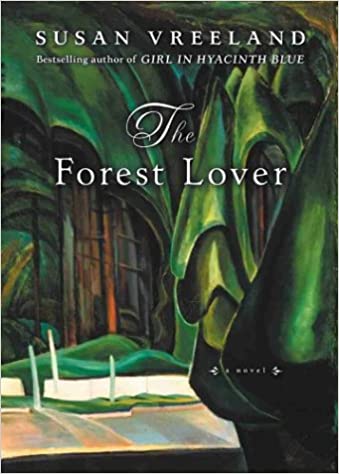
After the success of her award-winning novels Girl in Hyacinth Blueand The Passion of Artemisia, best-selling author Susan Vreeland shifts her focus to the 20th century to tell the story of an adventurer and fiercely independent painter-Emily Carr. Before Georgia O'Keefe redefined the desert landscapes of New Mexico and Frida Kahlo revolutionized the art of self-portraiture, Emily Carr blazed a trail onto the early 20th century art scene with her boldly modern and inventive renditions of the British Columbian landscape.
With her uncompromising brushstrokes and against all odds, she was able to capture not only the fading wilderness slowly marred by encroaching industrialization and assimilation, but also the indigenous villages, the tribal peoples, and their dying customs and art forms.
With great detail, Vreeland conveys how Carr overcame self-doubt and grew to believe in her own passion and ability and chose, at no small cost, to live a life less ordinary. From illegal potlatches in tribal communities in the interior and a tryst with a French fur trader to Paris in 1911, where she was part of the birth of modernism and cubism, Carr's story is as arresting and vibrant as her many canvases. Above all, it is the story of a woman who faced hypocrisy and injustice, and was always true to herself and to her art.
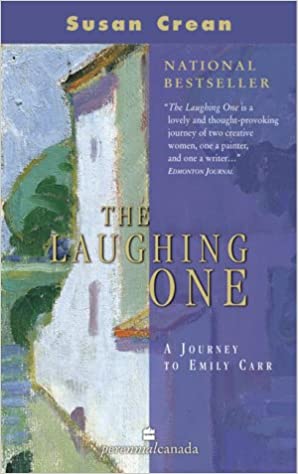
Much has been written about Emily Carr, seminal Canadian artist; eccentric and cantankerous woman; and "appropriator" of native culture, but few have explored how and why Carr has become a national touchstone, an icon who has helped us define who we are as Canadians. Writer, art historian and cultural critic Susan Crean does just that in The Laughing One: A Journey to Emily Carr, a fresh and unique investigation of Emily Carr and her influence.
Crean uses a multi-layered structure that combines historical research, including never-before-published material; fictionalized accounts of key events in Carr's life; and the author's own forays into Carr territory, reflecting on the startling connections between Carr's nineteenth-century sensibility and our present concerns with the environment; assimilation and destruction of native culture; spirituality; and identity.
Crean probes our fascination with Carr: Why was it that a 1913 showing of Carr's work went virtually ignored, while in 1927 - with a minimal change in style - her work was the star of a National Gallery exhibition, eclipsing even the Group of Seven? What was the meaning of the traumatic break with her father and her rejection of marriage? Why and how did a fledgling Canadian identity embrace her vibrant, often forbidding, landscapes?
Much more than a biography, The Laughing Onewill be an important new contribution to the world of Canadian art and cultural history and a thoroughly entertaining and insightful read.

Gerta Moray vividly recreates the rapidly changing historical and social circumstances in which the artist painted and wrote. Carr lived and worked in British Columbia at a time when the growing settler population was rapidly taking over and developing the land and its resources.
Moray argues that Carr’s work takes on its full significance only when it is seen as a conscious intervention in Native-settler relations. She examines the work in the context of images of Native peoples then being constructed by missionaries and anthropologists and exploited by promoters of world’s fairs and museums.
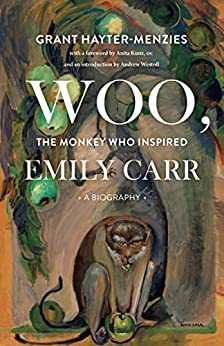
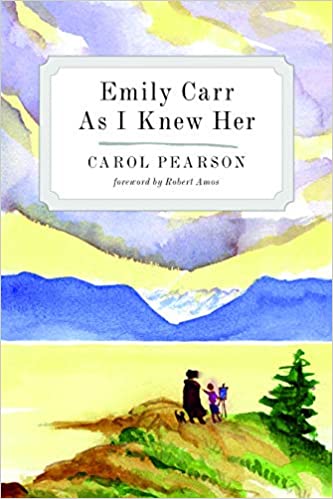
In 1916, Emily Carr wasn’t famous. She was poor, and she taught art classes to children to make a living. One of her students was seven-year-old Carol Pearson. Pearson spent hours every day with Carr: they painted together at the water’s edge, and she helped care for the dogs, birds, monkey and other animals that Carr kept as pets. Carr nicknamed Pearson “Baboo,” and Carol called her “Mom.” The two were as close as mother and daughter for twenty-five years, up until Carr passed away. This touching tribute to Carr illustrates a gentleness and sensitivity not seen in other biographies. Originally published in 1954 and long out of print, this very unique biography reveals Carr's personality more fully than any other. With a new foreword by Robert Amos, Canadian art historian.
Out of print for more than 40 years, this is an intimate and heartwarming biography that throws a whole new light on one of Canada's most beloved and iconic artists.

In This Woman in Particular, Stephanie Kirkwood Walker explores versions of Emily Carr’s life that have appeared over the last half-century. She contends that the biographical image of Emily Carr that emerges from an accumulation of biographies, films, plays and poetry as well as her own autobiographical writing establishes an elaborated cultural artefact — an “image” that is bound by its very nature to remain forever incomplete and always elusive. She demonstrates how changes in Carr’s biographical image parallel the maturing of Canadian biographical writing, reflecting attitudes toward women artists and the shifting balance between religion, secular attitudes and contemporary spirituality. And she concludes that biography plays a crucial role in all our lives in initiating and sustaining debate on vital personal and collective concerns.
``[This Women in Particular]...is a superlative and painstaking contribution to the literary and biographical canon regarding the work and life of Emily Carr. It is also a unique and valuable addition to any serious discussion of the nature of biography, biographical research, and biographical literature.'' ― The Midwest Book Review
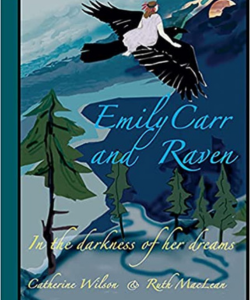

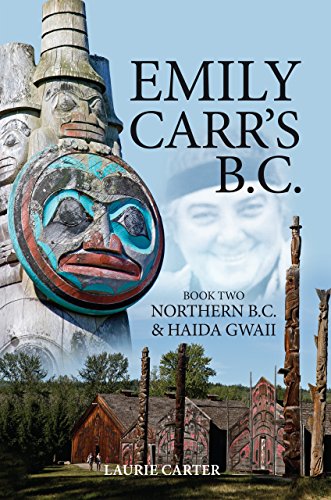
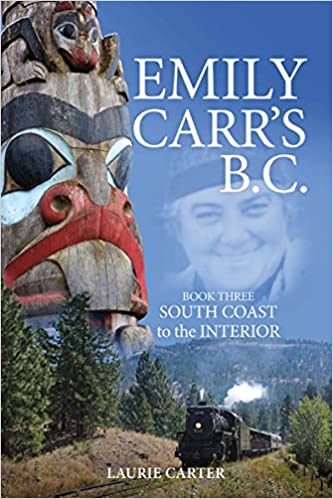
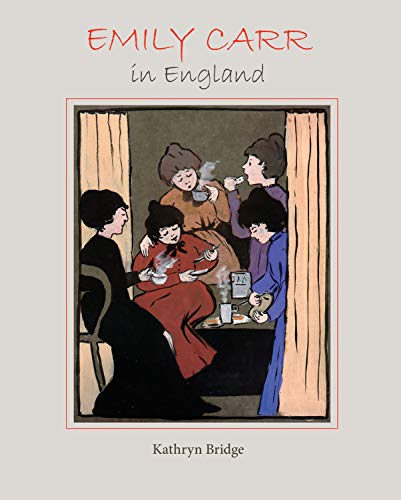
In 1899, at age 27, Emily Carr travelled to London to attend art school. She spent almost five years in England, and in this time her life completely changed. She returned to Canada in 1904 a mature woman, eyes widened from living abroad, chastened because of ill health and technically proficient as an artist.
Historian Kathryn Bridge takes a fresh look at Emily Carr's time in England. She reveals new evidence that fills in many of the gaps in our knowledge of this important phase of Carr's life, and she documents important connections with people that the artist maintained throughout her life. She illustrates her findings with historical photographs and Carr's own sketches, paintings and "funny books," some never published before. Altogether, this book gives readers an entertaining second look into a pivotal time in the life of one of Canada's most famous artists.
Three of Emily Carr's funny books are included in this volume: A London Student Sojourn, in which Carr makes fun of life in Mrs Dodd's Guest House, where she stayed while attending the Westminster School of Art; Kendal & I, recalling the day she and her friend Hannah Kendall attempted in vain to watch the funeral procession of Queen Victoria andThe Olsson Student, a comical look at a painting excursion into the woods during her art-school days in St Ives, Cornwall.
her three important public lectures
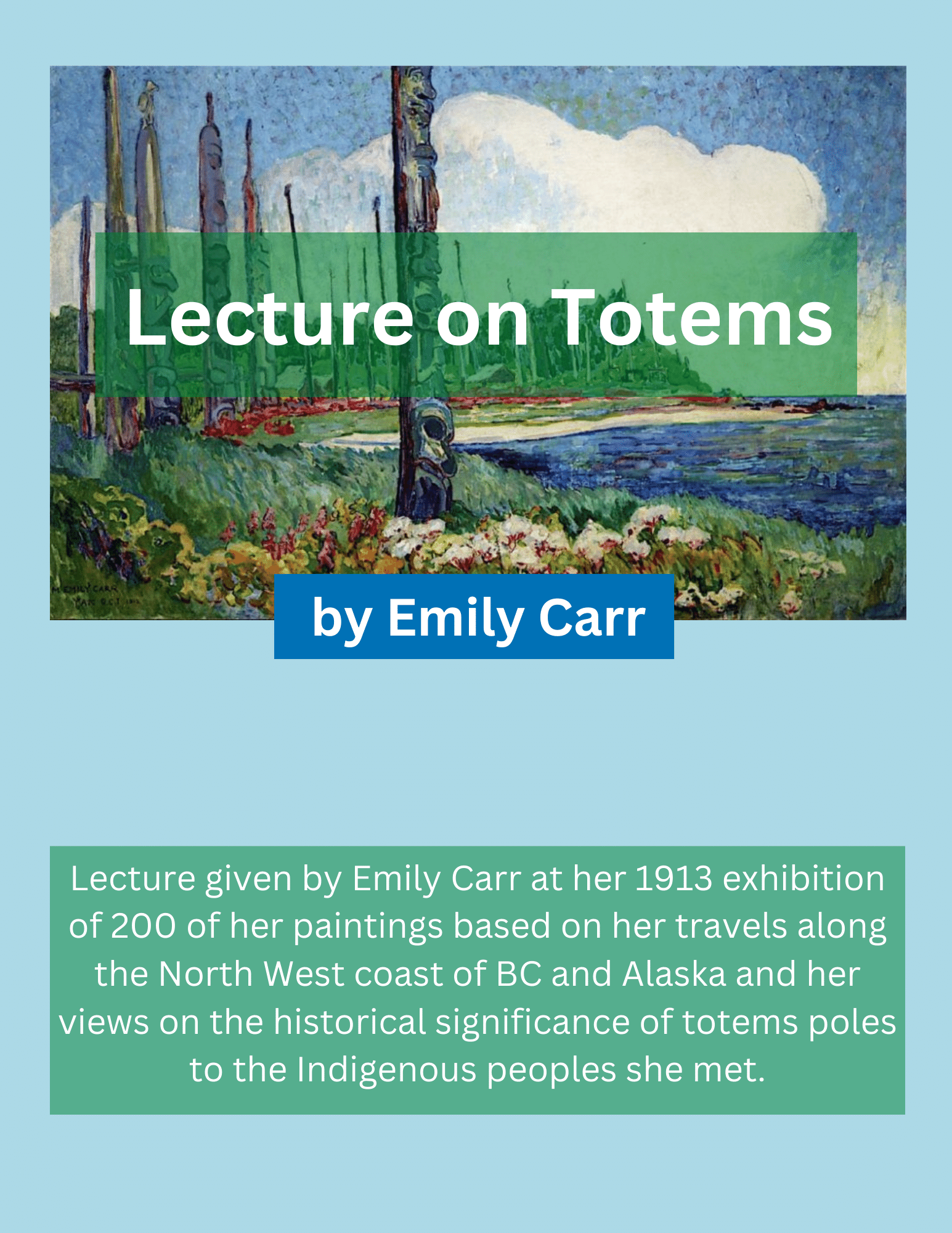
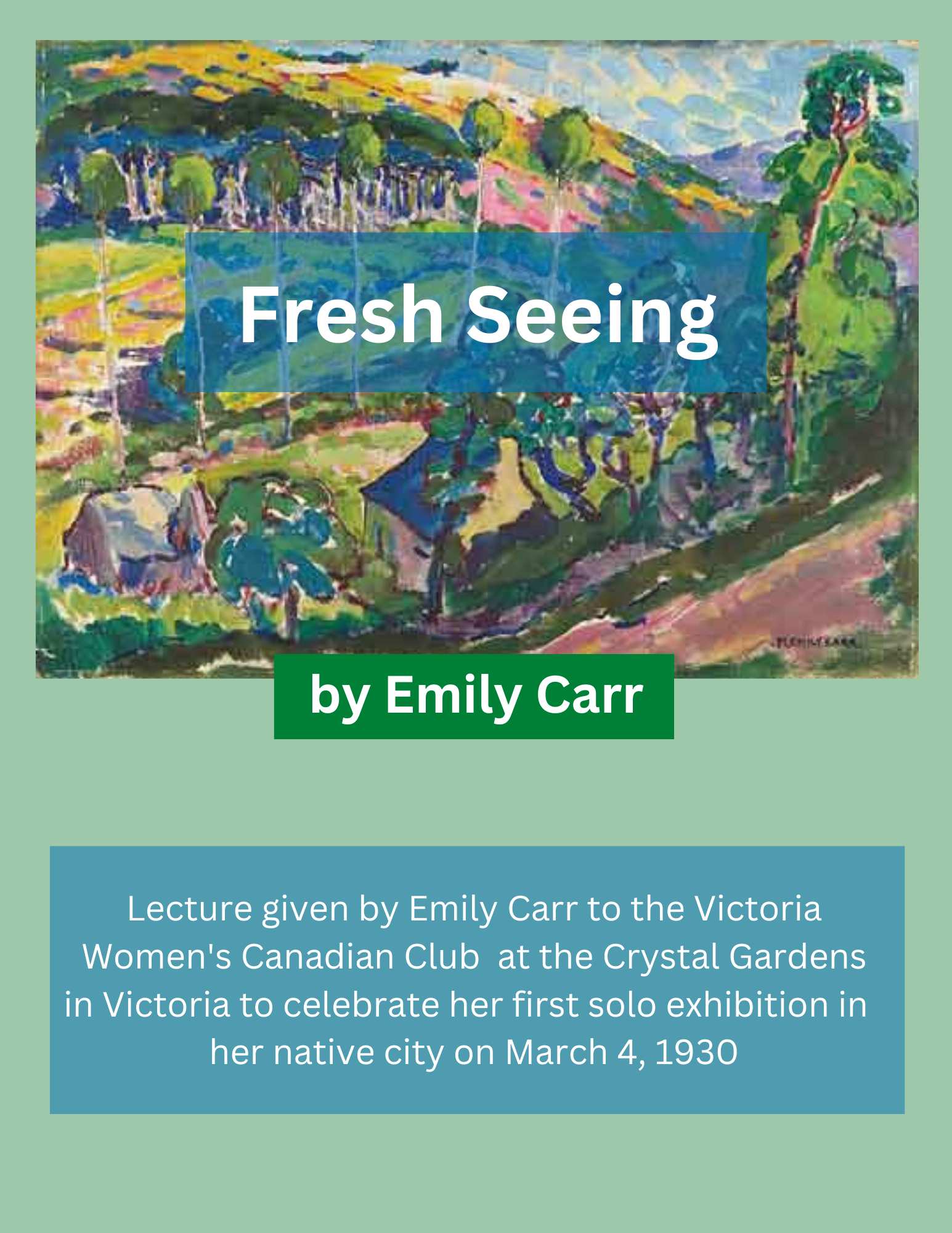
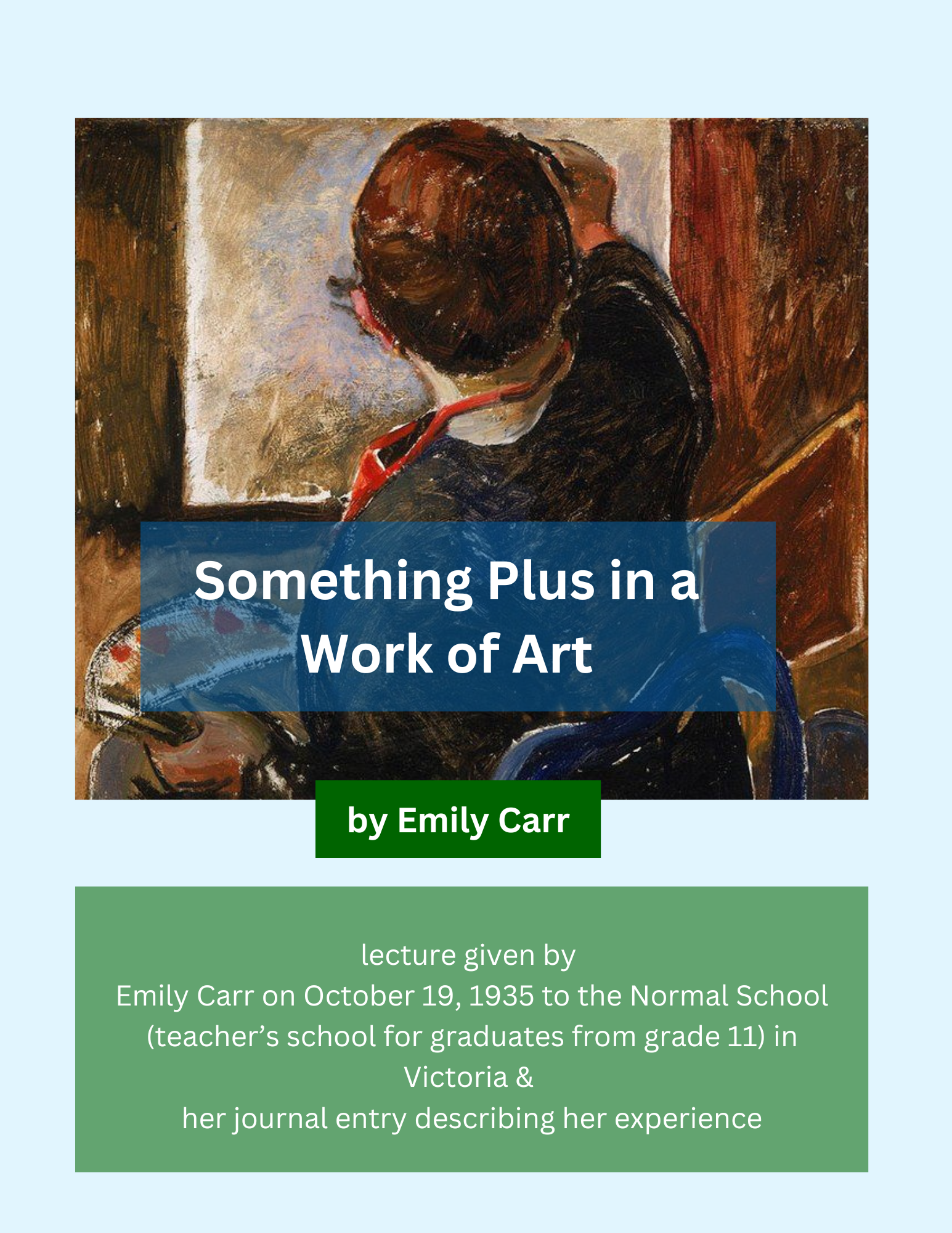
hosted, designed & maintained by Marilyn Jones for the walks & talks, bus tours and presentations she offers on Emily Carr in-person and online from Victoria, BC.


